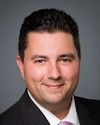Mr. Chair, the current regional Rouge Park was created in 1995. From 1995 to 2012 it was managed by the Rouge Park Alliance, and the chair was appointed by the Government of Ontario. ln 2010 the alliance commissioned and released a landmark governance report for Rouge Park. I think it's important to understand some of the history.
The alliance by way of its governance report unanimously recommended that Rouge Park become a federally administered park, cared for and managed under the leadership of Parks Canada.
As the minister mentioned, extensive public consultations have taken place since we first became involved in 2011, and we've met with and received feedback from over 150 different stakeholder groups and close to 11,000 Canadians.
ln short, the legislation and the draft management plan that we are consulting on now are the products of the most proactive and broad engagement of Canadians, communities, stakeholders, and different levels of government in the history of our agency, not only of this park.
For the remaining time, Mr. Chair, I wish to address three specific subjects: first, the agreement we negotiated with Ontario, what it is and what it isn't; second, the link between this bill and our proposed policy for the proposed park; third, the subject of conservation.
Recently in the media there has been a debate about obligations contained in the federal-provincial agreement signed between the Province of Ontario and the federal government in 2013 regarding land assembly for Rouge national urban park.
To ensure clarity on this matter, I would like to read a section of that agreement with respect to obligations required from both Ontario and Canada.
Paragraph a) of section 2.09 reads as follows:
a) Parks Canada will work with Ontario to develop written policies in respect of the creation, management, and administration of the Park that meet or exceed provincial policies regarding the Transferred Lands, including the policies set out in the Greenbelt Plan 2005, the Oak Ridges Moraine Conservation Plan, the Growth Plan for the Greater Golden Horseshoe 2006 and the Big Move.
Not once is there any mention of legislation in that commitment. The four documents mentioned are all provincial policies. I can assure you that Parks Canada is absolutely fulfilling the Government of Canada's commitment to meet and exceed in areas of protection of nature. Indeed, we have reviewed and incorporated the key elements of these policies into our management plan framework.
First, in our negotiations with the Province of Ontario, the province's lone stated legislative requirement for the Rouge national urban park bill was to include a provision that would allow lands to be returned to the province or other levels of government to help meet the expected future infrastructure and transportation needs of Canada's largest metropolitan area.
Second, as we plan to establish, operate, and manage Rouge national urban park, there are two interrelated but separate components that will provide us with a framework to manage the national urban park: the bill before you and our policy. The legislation provides us with the legal framework required to manage the park. The policy direction is found in the draft management plan and provides us with the long-term direction for the management and operation under the legislative framework.
lt is paramount that individuals not confuse these separate components. You will probably hear from groups during the committee process that will attempt to lump legislation and policy together, and it's important not to be confused or misled by this approach.
Finally, in terms of conservation, you should note that the term “ecological integrity” is not mentioned in the Ontario agreement at all.
Bill C-40 provides a strong legal framework under which to manage and operate the park and give the strongest protection in the Rouge's history.
First, the legislation will be applicable to the entirety of the future Rouge national urban park. This will be the first time the Rouge will have one piece of strong legislation governing the whole area as opposed to a patchwork of bylaws and policies that govern the current area.
I would now like to address the question of ecological integrity in Rouge national urban park. Again, this is an issue that has been raised in the media lately, and I wish to set the record straight and fully explain our approach.
The Rouge is truly an incredible place, but it does not exist in a landscape where Parks Canada's internationally acclaimed high standards for ecological integrity are unachievable. Seven million people live in the greater Toronto area, and the Rouge is fragmented by highways, roads, railways, hydro lines, private lands, homes, communities, malls, and infrastructure.
Our own Parks Canada experts have determined that approximately 72% of the current Rouge Park is disturbed, as opposed to an amount of about 2% for Banff National Park, for example, where we also have highways, so to have the same conservation standard between these two parks is unrealistic. However, this does not mean that we are settling for a second-class protected area by applying an ecosystem health approach across the Rouge's natural, cultural, and agricultural landscape. We will achieve the highest conservation and protection standards possible, while being realistic about the Rouge landscape. Our team is committed to maintaining or improving the health of that ecosystem.
We will apply the concept of ecosystem health across the entire park landscape in a way that not only conserves and restores natural and cultural heritage, but also promotes a vibrant farming community. We will end the cycle of one-year leases to provide farmers long-term leases and greater stability. The farmers in turn will commit to improving environmental protection and contributing to the visitor experience, and the cultural experience of the park.
The establishment of the Rouge national urban park is truly a unique opportunity for new, young, and urban Canadians to connect with Canada's incredible network of protected areas, and to be inspired to become stewards of this crown jewel.
Thank you.












